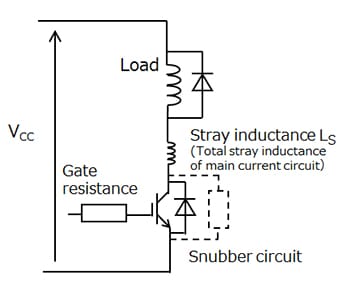- 半導體首頁
-
應用Automotive
Body Electronics
xEV
In-Vehicle Infotainment
Advanced Driver-Assistance Systems (ADAS)
Chassis
IndustrialInfrastructure
BEMS/HEMS
Factory Automation
Commercial Equipment
Consumer/PersonalIoT Equipment
Healthcare
Wearable Device
Mobile
Computer Peripherals
-
產品車用元件
Discrete Semiconductor
Diodes
電晶體
通用邏輯IC
Analog Devices
Digital Devices
Wireless Devices
※
: Products list (parametric search)
功率半導體※
: Products list (parametric search)
隔離器/固態繼電器Photocouplers
Digital Isolators
※
: Products list (parametric search)
MOSFETsIGBTs/IEGTs雙極性電晶體※
: Products list (parametric search)
Diodes※
: Products list (parametric search)
微控制器馬達驅動 ICs智能功率 ICs※
: Products list (parametric search)
電源管理 ICs線性 ICs※
: Products list (parametric search)
通用邏輯 ICs線性影像感測器其他產品其他產品
※
: Products list (parametric search)
-
開發/設計支援
開發 / 設計支援
-
技術知識
- 購買管道
- 型號 & 關鍵字搜尋
- 交叉搜尋
- 參數搜尋
- 線上庫存查詢跟購買
This webpage doesn't work with Internet Explorer. Please use the latest version of Google Chrome, Microsoft Edge, Mozilla Firefox or Safari.
型號需要超過三個文字以上 Search for multiple part numbers fromhere.
The information presented in this cross reference is based on TOSHIBA's selection criteria and should be treated as a suggestion only. Please carefully review the latest versions of all relevant information on the TOSHIBA products, including without limitation data sheets and validate all operating parameters of the TOSHIBA products to ensure that the suggested TOSHIBA products are truly compatible with your design and application.Please note that this cross reference is based on TOSHIBA's estimate of compatibility with other manufacturers' products, based on other manufacturers' published data, at the time the data was collected.TOSHIBA is not responsible for any incorrect or incomplete information. Information is subject to change at any time without notice.
型號需要超過三個文字以上
How can I provide protection against the surge voltage generated by the turn-off of an IGBT?
Figure (a) shows an example of an IGBT application circuit. Surge voltage is generated when the IGBT turns off while it is carrying the load current. Surge voltage is caused by a sharp change in IGBT current (-diC/dt) as well as the package and wire stray inductance (LS). At this time, VCEP = LS・diC/dt+VCC is applied to the IGBT instantaneously. The IGBT is permanently damaged if a voltage exceeding its breakdown voltage is applied. A primary solution for this is to reduce the stray inductance (LS) of the main current path. It is therefore necessary to increase the width and reduce the length of the wires. If it is difficult to reduce stray inductance, the switching speed of the IGBT should be reduced by increasing the value of an external gate resistor connected in series with the gate. Care should be exercised, however, because this causes its switching loss to increase. Surge voltage can also be reduced by inserting a snubber circuit between the collector and emitter terminals of the IGBT. However, the snubber circuit causes charge/discharge loss, increasing overall circuit loss.



